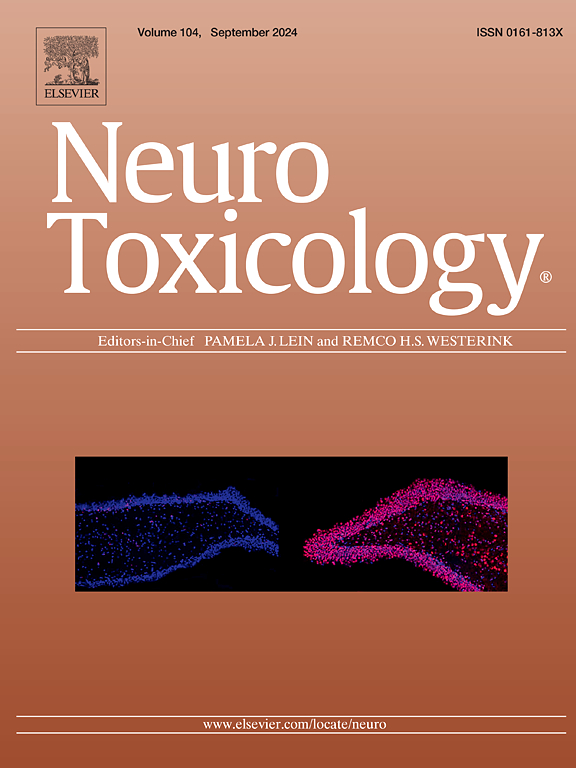Investigating tributyltin's toxic effects: Intestinal barrier and neuroenteric disruption in rat’s jejunum
IF 3.4
3区 医学
Q2 NEUROSCIENCES
引用次数: 0
Abstract
The expansion of economic activities in coastal areas has significantly increased chemical contamination, leading to major environmental challenges. Contaminants enter the human body through the food chain, particularly via seafood and water consumption, triggering biomagnification and bioaccumulation processes. The gastrointestinal tract (GIT) acts as a selective barrier, protecting against chemical pollutants and maintaining homeostasis through a complex network of cells and immune responses. This study assessed impact of tributyltin (TBT), a highly toxic organometallic compound used in antifouling coatings for ships, on the GIT and myenteric neural plasticity in young rats. TBT exposure leads to histopathological changes, including epithelial detachment and inflammatory foci, especially at lower environmental doses. The study found that TBT causes significant reductions in villi height, increases in goblet cells and intraepithelial lymphocytes, and disrupts the myenteric plexus, with higher densities of extraganglionic neurons in exposed animals.
研究三丁基锡的毒性作用:大鼠空肠的肠道屏障和神经肠功能紊乱
沿海地区经济活动的扩展大大增加了化学污染,导致重大环境挑战。污染物通过食物链进入人体,特别是通过海产品和水的消费,引发生物放大和生物累积过程。胃肠道(GIT)是一道选择性屏障,通过复杂的细胞和免疫反应网络保护人体免受化学污染物的侵害并维持体内平衡。本研究评估了三丁基锡(TBT)对幼鼠胃肠道和肠系膜神经可塑性的影响,三丁基锡是一种剧毒有机金属化合物,用于船舶防污涂层。接触三丁基锡化合物会导致组织病理学变化,包括上皮脱落和炎症病灶,尤其是在环境剂量较低的情况下。研究发现,三丁基锡化合物会导致绒毛高度明显降低、鹅口疮细胞和上皮内淋巴细胞增加,并破坏肠肌丛,使暴露动物的节外神经元密度升高。
本文章由计算机程序翻译,如有差异,请以英文原文为准。
求助全文
约1分钟内获得全文
求助全文
来源期刊

Neurotoxicology
医学-毒理学
CiteScore
6.80
自引率
5.90%
发文量
161
审稿时长
70 days
期刊介绍:
NeuroToxicology specializes in publishing the best peer-reviewed original research papers dealing with the effects of toxic substances on the nervous system of humans and experimental animals of all ages. The Journal emphasizes papers dealing with the neurotoxic effects of environmentally significant chemical hazards, manufactured drugs and naturally occurring compounds.
 求助内容:
求助内容: 应助结果提醒方式:
应助结果提醒方式:


